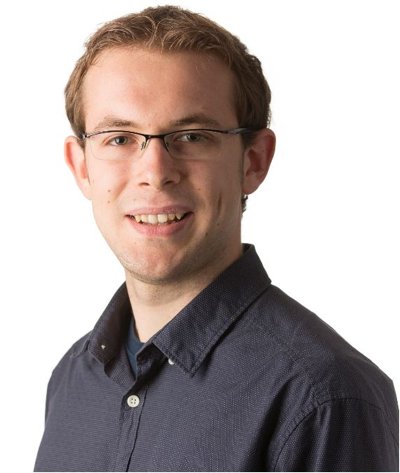IoT receiver techniques - On filtering, power consumption and phase noise
Due to the COVID-19 crisis the PhD defence of Bart Thijssen will take place online (until further notice).
The PhD defence can be followed by a live stream.
Bart Thijssen is a PhD student in the research group Integrated Circuit Design (ICD). His supervisor is prof.dr.ir. B. Nauta from the Faculty of Electrical Engineering, Mathematics and Computer Science (EEMCS).
 The wireless receiver has a significant impact on the connectivity performance and battery lifetime of Internet-of-Things (IoT) devices. High selectivity becomes increasingly important with an increasing number of devices that compete in the congested 2.4GHz industrial, scientific and medical (ISM) band. In addition, low power consumption is very important for IoT receivers as the burden of changing batteries increases proportionally with the number of the devices. Complementary metal-oxide-semiconductor (CMOS) technology allows for highly integrated IoT devices with small form factor, low digital processing power consumption and low costs.
The wireless receiver has a significant impact on the connectivity performance and battery lifetime of Internet-of-Things (IoT) devices. High selectivity becomes increasingly important with an increasing number of devices that compete in the congested 2.4GHz industrial, scientific and medical (ISM) band. In addition, low power consumption is very important for IoT receivers as the burden of changing batteries increases proportionally with the number of the devices. Complementary metal-oxide-semiconductor (CMOS) technology allows for highly integrated IoT devices with small form factor, low digital processing power consumption and low costs.
The dissertation presents circuit innovations for a CMOS wireless IoT receiver, that allow to improve the performance of an IoT receiver while reducing its power consumption. An analog FIR filter is proposed that allows for a >20dB increased selectivity. Furthermore, the analog FIR techniques proposed in the dissertation have many other potential applications. The proposed Windmill divider architecture halves the power consumption while reducing the phase noise. The feedforward phase noise cancellation architecture reduces the PLL rms jitter by 7.2dB without significantly increasing its power consumption.
These innovations help to pave the way to an all connected world – not just connecting everyone, but connecting everything.
